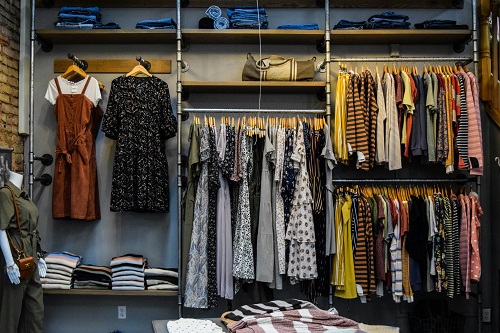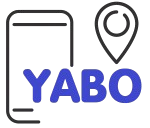CASE STUDY- Fashion Clothing Brand Business

COMPANY PROFILE
Modern She, an emerging online clothing brand, traces its roots to a vision of combining contemporary fashion with affordability. The founder recognized a gap in the market for trendy yet budget-friendly clothing, inspiring the creation of Modern She as a solution to this niche. The owner strategically focused on understanding the preferences of the modern, style-conscious woman.
Extensive market research and trend analysis guided the development of a diverse product range, ensuring the brand resonated with its target audience. Choosing the online platform was a deliberate decision driven by the desire to reach a global audience and capitalize on the e-commerce boom. This digital presence allows Modern She to showcase its collections, engage with customers, and streamline the shopping experience.
Running the business successfully requires a skilled team encompassing designers, inventory managers, customer service representatives, and a digital marketing team. Collaborations with manufacturers and suppliers also play a crucial role in maintaining a robust supply chain.
Modern She employs a multi-faceted marketing approach, including social media campaigns, influencer partnerships, and regular updates on the website to showcase new arrivals. Email marketing and customer loyalty programs contribute to customer retention.
Analyzing sales data and customer feedback helps refine these strategies, ensuring their effectiveness in generating sales and fostering brand loyalty.
Step-by-Step Guide to Running Your Online Clothing Brand Business
Step 1: Vision and Brand Concept
Start by defining the vision for your online clothing brand, let’s call it Modern She.” Envision a brand that caters to modern, confident women, offering contemporary and chic fashion choices that empower and inspire. Create a vision board by gathering images and inspirations that represent the aesthetic and values you envision for Modern She. Define key brand concepts, such as empowerment, modernity, and versatility.
Step 2: Market Research and Target Audience
Conduct thorough market research to identify current fashion trends and understand your target audience. Delve into their preferences, lifestyle, and purchasing behaviors to tailor your designs to resonate with them. Use tools like Google Trends to identify current fashion trends. Analyze social media platforms, particularly Instagram and Pinterest, to understand the preferences and lifestyles of your target audience.
Step 3: Product Design and Development
Collaborate with designers and manufacturers to curate a collection that aligns with your brands identity. Emphasize quality fabrics, modern silhouettes, and staying ahead of fashion trends to create pieces that resonate with your target audience. Collaborate with freelance designers on platforms like Upwork or Fiverr to create prototype designs. Source quality fabrics from suppliers like Alibaba or trade shows specific to the fashion industry.
Step 4: Photography and Content Creation
Arrange professional photoshoots to showcase the fashion-forward designs of your brand. Create engaging content, including style guides, trend insights, and behind-the-scenes glimpses, to connect with your audience and build a community around the brand. Schedule professional photoshoots with local photographers or use platforms like StyleShoots. Create engaging content using social media planning tools like Later or Buffer.
Step 5: Social Media Presence
Leverage social media platforms to create a dynamic online presence. Share consistent and visually appealing content, including customer features and interactive posts, to establish your business as a lifestyle brand and foster a sense of community. Establish and manage active profiles on Instagram, Facebook, and Pinterest. Utilize scheduling tools like Hootsuite or Planoly to maintain a consistent posting schedule.
Step 6: Marketing and Promotions
Implement a strategic marketing plan encompassing social media advertising, influencer collaborations, and email campaigns. Utilize exclusive promotions, limited time offers, and storytelling campaigns to contribute to brand visibility and customer engagement. Run targeted social media ads using Facebook Ads Manager or Instagram Ads. Collaborate with influencers in your niche by reaching out through platforms like Influence.co or AspirelQ.
Step 7: Inventory Management
Implement efficient inventory management systems to prevent overstock or stockouts. Regularly assess product performance to guide future production and purchasing decisions, ensuring a balance between demand and supply. Implement inventory management software such as Stitch Labs or TradeGecko. Regularly assess product performance through Google Analytics and sales reports.
Step 8: Growth and Expansion
As your brand gains traction, explore growth opportunities, such as expanding product lines, entering new markets, and potentially collaborating with influencers or other brands. Explore collaborations with influencers by reaching out through professional networking platforms like LinkedIn. Consider international expansions by researching cross-border e-commerce regulations and partnering with global fulfillment services.
Estimated Startup Costs:
Legal Considerations and Branding:
Business registration and licensing fees: between KES 10,000 and KES 20,000
Branding and logo design: between KES 5,000 and KES 10,000
Product Design and Development:
Collaboration with designers: between KES 20,000 and KES 50,000
Prototype development and sampling: between KES 10,000 and KES 30,000
Fabric sourcing and initial inventory: between KES 20,000 and KES 50,000
Photography and Content Creation:
Professional photoshoots: between KES 10,000 and KES 30,000
Content creation tools and software: between KES 5,000 and KES 10,000
Technology and Online Presence:
Website development and maintenance: between KES 20,000 and KES 50,000
Social media management tools: between KES 5,000 and KES 10,000
Marketing and Promotions:
Social media advertising budget: between KES 10,000 and KES 30,000
Influencer collaborations: between KES 5,000 and KES 20,000
Inventory Management:
Inventory management software subscription: between KES 5,000 and KES 10,000
Miscellaneous Expenses:
Office supplies and utilities: KES 5,000 – KES 10,000
Packaging materials: KES 5,000 – KES 10,000
Total Estimated Startup Costs: Approximately KES 100,000 – KES 250,000.
These figures serve as estimates and may vary based on specific circumstances, location, and business requirements. It’s essential to conduct thorough research and budgeting to determine the actual startup costs for Modern She.

